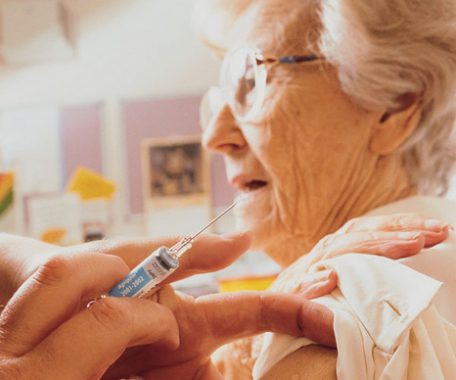BMA urges flu vaccines for ‘vulnerable groups’ after winter deaths hit 18-year high

Scotland recorded the highest number of winter deaths for 18 years during the 2017/18 flu season, figures released today show.
There were 23,137 deaths registered across Scotland compared with 20,946 the previous year and the highest figure since 1999/2000.
The National Records of Scotland (NRS) calculated that the extra number of deaths in the winter period was 4,800 for the 2017/18 season compared with 2,730 the previous year – an increase of 75%.
Meanwhile, last winter saw higher than usual rates of flu-like illness and left the NHS in Scotland struggling to cope with demand.
Health officials, therefore, urged those in at-risk groups and the elderly to have a flu vaccine.
Dr Lewis Morrison, chair of BMA Scotland said the increase is deaths is ‘unsurprising’, considering ‘the poor effectiveness of last year’s flu vaccine against some of the strains that were circulating’.
He said: ‘While the report makes clear that influenza was only a direct cause of death in a small proportion of cases, many doctors will have seen patients who had flu that was complicated by secondary bacterial infections.’
He added: ‘While questions have rightly been asked about the Scottish Government’s procurement process this year, vaccination of vulnerable groups of society remains the most important thing we can do to protect against the spread of flu during winter months.’
But GPs in Scotland are having to restrict the use of the newly introduced enhanced flu vaccine to over-75s after the Government failed to secure enough stock of the vaccine.
It counters advice from the Joint Committee on Vaccination and Immunisation that the more effective adjuvanted trivalent flu vaccine (aTIV) should be used in all patients over the age of 65 this year.
NRS chief executive Anne Slater said the long-term trend for winter deaths in Scotland had been downward but she added that ‘the average value for the latest five years – which smoothes out much of the year-to-year fluctuation – is now above the level that had applied since the early 2000s’.
She said: ‘It is too soon to say whether there has been a change in the long-term trend: it could just be a short-term rise, like that seen roughly 20 years ago, after which the average fell for several years.’
Visit Pulse Reference for details on 140 symptoms, including easily searchable symptoms and categories, offering you a free platform to check symptoms and receive potential diagnoses during consultations.











